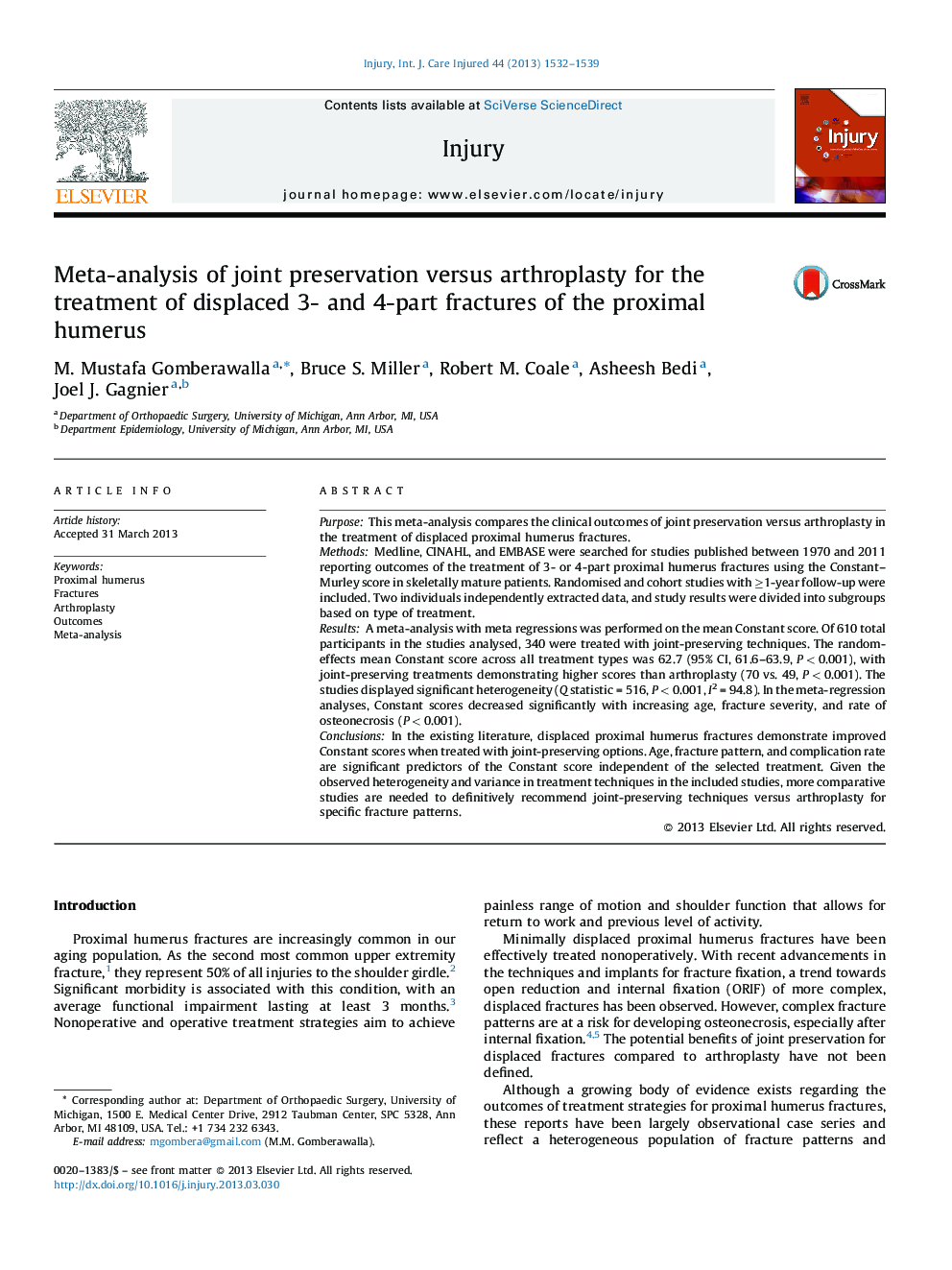| Article ID | Journal | Published Year | Pages | File Type |
|---|---|---|---|---|
| 6083992 | Injury | 2013 | 8 Pages |
PurposeThis meta-analysis compares the clinical outcomes of joint preservation versus arthroplasty in the treatment of displaced proximal humerus fractures.MethodsMedline, CINAHL, and EMBASE were searched for studies published between 1970 and 2011 reporting outcomes of the treatment of 3- or 4-part proximal humerus fractures using the Constant-Murley score in skeletally mature patients. Randomised and cohort studies with â¥1-year follow-up were included. Two individuals independently extracted data, and study results were divided into subgroups based on type of treatment.ResultsA meta-analysis with meta regressions was performed on the mean Constant score. Of 610 total participants in the studies analysed, 340 were treated with joint-preserving techniques. The random-effects mean Constant score across all treatment types was 62.7 (95% CI, 61.6-63.9, P < 0.001), with joint-preserving treatments demonstrating higher scores than arthroplasty (70 vs. 49, P < 0.001). The studies displayed significant heterogeneity (Q statistic = 516, P < 0.001, I2 = 94.8). In the meta-regression analyses, Constant scores decreased significantly with increasing age, fracture severity, and rate of osteonecrosis (P < 0.001).ConclusionsIn the existing literature, displaced proximal humerus fractures demonstrate improved Constant scores when treated with joint-preserving options. Age, fracture pattern, and complication rate are significant predictors of the Constant score independent of the selected treatment. Given the observed heterogeneity and variance in treatment techniques in the included studies, more comparative studies are needed to definitively recommend joint-preserving techniques versus arthroplasty for specific fracture patterns.
